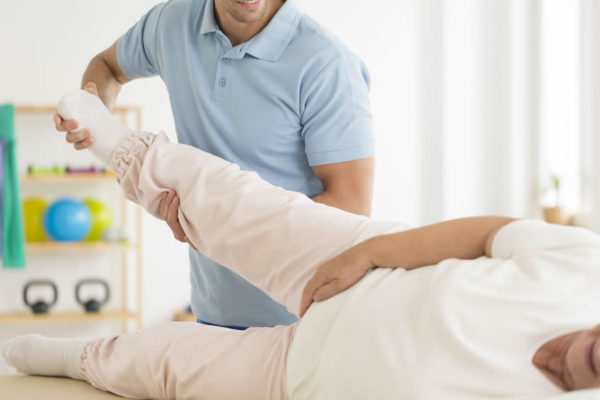Gluteal tendon pathology (Lateral hip pain)
 In addition to the femur (thigh bone) and acetabulum (bony hip socket), the hip area contains many important structures that work together to give you a stable hip joint with a wide range of motion.The gluteal muscles are a group of strong muscles located towards the back and side of your hip (buttocks) and function together to:
In addition to the femur (thigh bone) and acetabulum (bony hip socket), the hip area contains many important structures that work together to give you a stable hip joint with a wide range of motion.The gluteal muscles are a group of strong muscles located towards the back and side of your hip (buttocks) and function together to:
- help keep you upright
- straighten your leg behind you
- move the leg out to the side
- rotate the leg
These muscles arise from the pelvis and attach to the femur bone via tough bands of tissue called tendons. Small fluid filled sacks (bursae) are also found around the hip to reduce friction between the mobile muscles and bones.
It is possible for any of these structures to become worn out, damaged or inflamed, causing symptoms that are now collectively referred to as lateral hip pain – meaning pain on the outside of the hip or thigh. Previously, the term trochanteric bursitis has been used to describe pain in this area as the pain was attributed to inflammation of the small, fluid filled bursa sackon the side of the hip. It is now recognised that it can also be the tendons of the gluteal muscles that become worn out, damaged or irritated, causing pain in this location. This is referred to as gluteal tendinopathy. Lateral hip pain encompasses both trochanteric bursitis and gluteal tendinopathy.
Lateral hip pain is a very common condition that affects women more often than men and people are more at risk as they age. Pain is often felt on the outside of the hip or thigh but can also radiate towards the knee. The pain might be brought on by certain activities such as going up or down stairs or, in specific positions such as lying on your side. The symptoms can be severe and make it difficult to engage in the activities you enjoy.
If you have hip pain, your surgeon will spend time speaking with you and perform an examination. If gluteal tendinopathy or trochanteric bursitis is suspected, your surgeon may order investigations such as an ultrasound or MRI scan to confirm the diagnosis and help to plan your treatment.
Your surgeon may prescribe a specialised physiotherapy program to help relieve your symptoms which has been shown to be a highly effective way of treating lateral hip pain. Your surgeon can offer you advice about positioning for standing, sitting and sleeping that reduces the stress on the affected area. Often, changes to your activities may also be required for a period of time. In addition, anti-inflammatory medication or corticosteroid injections can be used to reduce you pain initially so that you are better able to participate with the physiotherapy program.
A small group of people may benefit from surgery to help treat lateral hip pain including people who have:
- an underlying condition that makes them more prone to inflammation of the structures around their hip
- sustained significant damage to their gluteal tendons
- tried non-surgical management for lateral hip pain but symptoms have not been relieved
